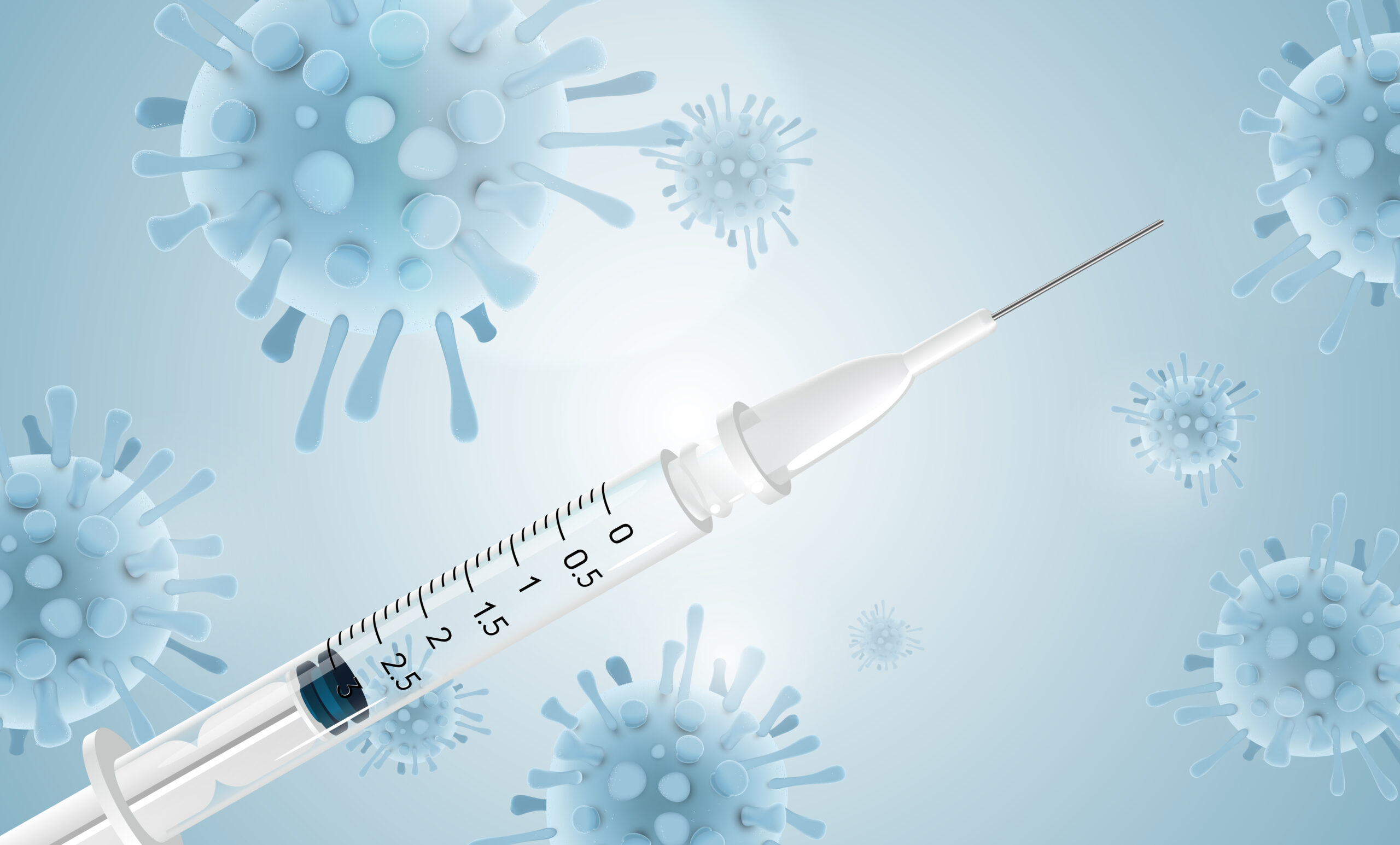The COVID-19 global health crisis has shown that the world was not ready to respond to pandemics. As the virus is slowly fading from our everyday lives almost 3 years after COVID-19 was declared a pandemic by the World Health Organization (WHO), urbanization, deforestation, climate change, and global travel all increase the risk of future pandemics. A recent study estimates the risk of another pandemic at 2% per year, which translates to a 1 in 5 chance over the next ten years. As we know now, waiting for the next crisis is not an efficient strategy, we must start ensuring now that we are better prepared to deal with pandemics in the future. This is crucial. In this article, Alcimed reviews the lessons learnt from the covid-19 pandemic and how to prepare for the next pandemics.
What did we learn from the COVID-19 pandemic?
While an immediate and unprecedented multinational effort allowed for the development of safe and effective vaccines and flattened the COVID-19 curve in many countries, the global response was far from perfect. The largest upside of the COVID-19 outbreak response was the substantial improvement in the development speed of effective and safe vaccines. However, this contrasts with the inequitable distribution and access of those vaccines around the world.
A substantial improvement in the development speed of effective and safe vaccines
Pre-pandemic, traditional vaccines were developed over a 10- to 15- year time period. However, new technologies, unprecedented public investment and collaboration of regulatory agencies motivated by great financial and health impact costs allowed the development of safe and efficacious COVID-19 vaccines at extraordinary speed. The development time was shortened to less than a year with new technologies such as mRNA vaccines and viral vectors vaccines respectively being designed, tested, and manufactured in about 11 and 12 months after the sequencing of the virus genome.
Although this great achievement should be celebrated, the health and financial impacts of the virus have been enormous. COVID-19 has caused over 6.65 million deaths worldwide as of December 21st, 2022. But the full impact of the pandemic is much greater with over 18 million estimated deaths directly and indirectly attributed to COVID-19. The pandemic has also been responsible for great economic losses which are projected to reach 28 trillion USD globally by 2025.
An inequitable distribution and access of those vaccines around the world
The impact of COVID-19 has been aggravated by global inequalities in vaccine access between rich and poor countries. Those inequalities still represent a big threat to the management of current and future pandemics. High-income countries started vaccination about two months earlier than low-income countries and the vaccination coverage gap has still not been filled. While about 73% of people received at least one dose of the COVID-19 vaccine in high-income countries, only 23% of the population in low-income countries has had one dose of the vaccine.
This vaccine inequity is mostly due to the centralized vaccine development and manufacturing in high-income countries and vaccine nationalism, which you can read more about in Part 1: The End of COVAX.
While the world’s lack of preparedness for a pandemic of this scale is undeniable, it was partially compensated by the public investments and efforts made by scientists, vaccine manufacturers, and regulatory agencies. The question that remains: Is everything that has been achieved in response to the COVID-19 pandemic sustainable to help us prepare for the future?
What is left to do to be ready to face future pandemics?
The United Nations and World Health Organization define preparedness as the ability of societies to anticipate, detect, and respond effectively to, and recover from, the impact of likely, imminent, or current health emergencies, hazards, events, or conditions. Pandemic preparedness is captured in the Global Health Security (GHS) Index.
Countries need to develop sustainable capacity to address the next pandemics
Despite the unprecedented investments made in response to COVID-19, the 2021 GHS Index average country score was 38.9 out of 100. This means the world is not prepared to deal with the next global pandemic. This score is essentially unchanged from 2019, before the COVID-19 pandemic, because many of the new capacities built during the pandemic are temporary, short-term, COVID-19-specific measures. While many countries quickly developed capacities to address COVID-19, they remain dangerously unprepared to face next pandemics.
Countries must build enduring capacities that can be applied to a range of infectious diseases but most of them, including high-income countries, have not made investments to improve their pandemic preparedness. 155 out of 195 countries have allocated no national funds within the past three years to improve their capacity to address pandemics.
Efforts in pandemic prevention and rapid response are especially needed.
The global average score for the prevention of pathogens is 28.4 out of 100, making it the lowest score within the GHS Index. 113 countries pay little to no attention to zoonotic diseases such as those caused by coronaviruses. Rapid response is also insufficient with 58% of countries scoring below average for rapid response to a pandemic.
Those shortcomings leave the world vulnerable to future pandemics and being prepared before a threat indisputably offers the best protection. Investing in early detection of outbreaks, vaccine R&D and manufacturing, and equitable vaccine access among other things, will allow for filling the remaining preparedness gaps for the long term.
Public investment in global vaccine development and distribution is needed to achieve global pandemic preparedness
To make sure that countries are ready to respond to a future pandemic, governments should act now to fund the necessary capacities. A significant public investment in vaccine development and global distribution is needed to achieve global pandemic preparedness. But how much should be spent in public investment?
The US government and the European Commission have proposed to spend respectively USD 65.3 billion over 10 years and USD 50 billion on a pandemic preparedness plan. While this amount of spending has greatly improved, with only up to USD 1 billion of investment pre-COVID-19, it is still insufficient. Vaccine experts have estimated that spending of about USD 600 billion is required to prepare for future pandemics. Out of that USD 600 billion, about USD 10 billion to 20 billion should be used to develop on-demand vaccine manufacturing capacity, which could be called upon in the event of a pandemic.
Read also : Lessons learned from the end of COVAX: major achievements and key success factors to prepare for the next pandemic
The lack of global response and vaccine distribution inequity means that countries must rely on domestic capacities to stop a pandemic. Those on-demand manufacturing sites should thus be organized as regional hubs across the world. GAVI is already committed to the development of a regional vaccine ecosystem but should consider including some routine vaccination capacity in these regional centers to ensure that they thrive between pandemics. Alcimed follows closely the fast evolutions in the field of pandemic preparedness and is ready to support you on these subjects! Don’t hesitate to contact our team!
About the author,
Julie and Danna, Consultant in the Alcimed’s Healthcare team in USA.



